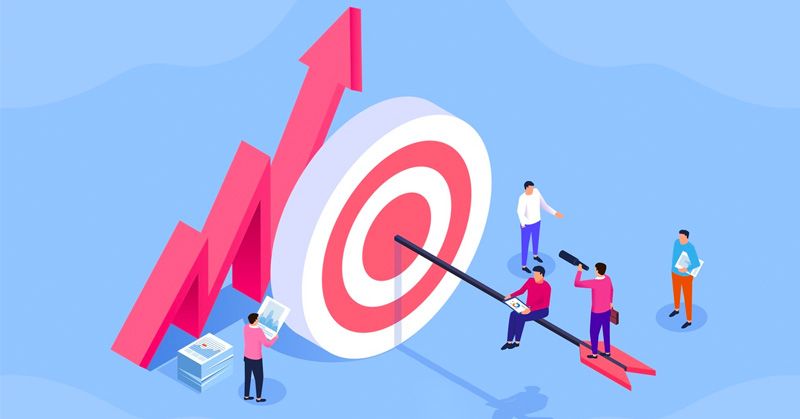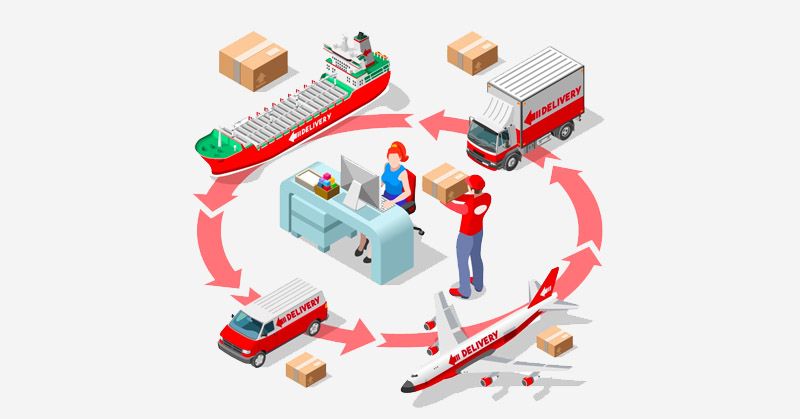10 Step-Wise Processes to Start a Sportswear Brand
Why Selling Sportswear?
Before answering why selling sportswear, let’s take a look at some data here:
- In 2021, U.S. sports apparel sales reached $70 billion, and consumer spending on sports apparel is rapidly picking up and showing new growth trends if compared with 2020, with an expected annual growth rate of up to 9% over the next five years.
- Market research shows that after the epidemic outbreak, Korean consumers’ spending on home wear, sportswear and leggings has increased significantly compared to the pre-outbreak period, and the preference for sports and casual wear has also increased considerably.
- A consumer study by a U.K. market research firm found that sportswear sales in the U.K. soared during the outbreak, with half of those surveyed buying home fitness products, including sports clothing, and 76% of people planning to continue exercising at home after the COVID-19 ends.
- In 2021, sportswear sales in Russia resumed their upward trend after the epidemic outbreak, and the market continued to expand, becoming a bright spot in the country’s retail development.
Therefore, if you want to start a business, there is no doubt that building your sportswear brand is a great choice, especially since the future potential of sportswear is all to be desired. Moreover, people have become accustomed to wearing bright and attractive sportswear at home or while exercising outside; this is because that comfortable and quick-drying sportswear motivates them to indulge in sports, exercise, and other healthy activities.
Why Selling Private Label Sportswear?
When deciding to sell sportswear, there’s one thing we should always pay attention to: should we sell branded sportswear or private-label sportswear? Yes, this is a question. If you have enough strength to apply to be a distributor or retailer of some famous brands, you can sell such sportswear more quickly than private labels. However, selling for well-known brands always means a lot of investment, such as speciality stores, strict sales targets, online websites, large service teams, regular training, etc.
On the contrary, it is relatively easy to sell private label sportswear because the investment will be much less, plus the trademark, logo, brand domain name, and website are all yours. If you are an event holder or an internet influencer with your fan base and community, selling your own branded sportswear will be an easy start.
Hence, if you also think that selling private-label sportswear is a good niche, the following will guide you step by step through the process of how to start a sportswear brand.
10 Steps to Start a Sportswear Brand
Step 1: Find Your Niche
We should know that a niche market is to choose a less competitive product or service area, concentrate all efforts on entering and becoming the leader, and then move from the local market to national or global, while building various barriers to develop a lasting competitive advantage gradually. Thus, to start your sportswear brand, you should first focus on finding your niche market.
However, at this stage, many people make the mistake of looking for niche products to sell first, but the right approach is that you should have a clear idea of who your target customers are. Write down on paper everything about your future buyers, such as country/region, age, gender, and other detailed characteristics; this is to help you narrow down your customer base to the correct size.

Step 2: Niche Analysis
In this step, you need to find out what keywords your customers use when searching for topics relevant to your niche market, especially those related to their problems. The best way to perform the niche analysis is to search on Amazon, Shopify, or any review site and check what your competitors’ customers are complaining about.
Gather all the complaints and even make an infographic to help you find your niche product – to help solve some of the problems or to capture the differentiation of unmet consumer needs that your competitors can’t do or even know about; however, you should never forget that a good niche market means that the target customer can keep growing, and so can your sportswear brand business.

Step 3: Business Plan
After a series of niche research, I’m sure you’ve probably made some progress and are eager to turn those ideas or inspirations into a real business; however, you must know precisely how to start your sportswear brand business from scratch and write a business plan so that you can bring others on board with you, such as investors and, if possible, partners.
It would be best if you were careful while writing the business plan because though it is quite a daunting task, the process is exciting. It must be according to the market trend keeping in mind the needs and requirements of the customers. Your business plan must include the following points:
- An overview of the company along with the roles and responsibilities of each member.
- The number of funds that are required to start the business initially. You can approach the bank or any financial institution for a loan if there is a shortage of funds.
- The objectives of the business and ways to achieve them.
- Detailed market research regarding the needs and requirements of the customers.
- Ways to implement your plan so that you can target potential customers and enhance your business.
- Your plan once you achieve your goals and objectives.

Step 4: Branding
If you don’t have a brand, even though the products you sell may be outstanding, some people will still think they’re expensive. Conversely, if you have your brand, customers will weaken their perception of your prices over time.
However, there are many sportswear brands worldwide, so you have to be ready to face fierce competition when you step towards creating a brand. In this case, your brand needs to be unique to catch the eye of your customers, and the first thing to decide is a good brand name, logo, and colors.
A good brand name can help you establish the easiest way to recognize, remember and discuss your brand. It can be the intangible but most valuable asset that drives differentiation from other brands and accelerate acceptance of yours. In addition to this, there are some essential factors you should also know:
- Brand promises: How exactly will your product benefit your customers, what are the differences if compared with others, and how will you make that happen?
- Brand story: You need to focus on writing a story that gives your customers a sense of the company’s sincerity rather than self-aggrandizement.
- Website designs, fonts, images, banners, and contents: All must be unique.
- Product designs and colors: A market survey is necessary as you will get an insight into your customers’ needs and develop your featured products so that when people are talking about your brand, they will first think of your charming designs and colors.
- Customer services: Ensure that every pre and post-sale is consistent with your brand promise and follows your brand guidelines, and it is essential to determine why people rate your product less. It will give you a clear idea of the gray areas in the product design so that you can make the amendments instantly.

Step 5: Product Sourcing
Once you’ve visualized your sportswear brand and you’re confident enough to proceed, now is the time to focus on product sourcing. Because no matter how much you invest, you must meet the needs and requirements of your customers to ensure your business runs smoothly. Simply put, you need to find reliable manufacturers to help implement your ideas and make sportswear that is uniquely and attractively designed so that you can automatically gain the trust of your customers.
There are multiple avenues for you to source the manufacturers to help turn your ideas to life:
- Trade show: There are many regular fairs or exhibitions held in the world every year; search with some keywords like sporting goods fair or sportswear exhibition; if you are looking for Chinese sportswear manufacturers, you can also attend Canton Fair.
- Online B2B platform: Due to the problems with COVID-19, many shows were postponed, and people started to look for manufacturers online, such as alibaba.com, made-in-china.com, or any reputable B2B platform.
- Business directory: Use BBB or any business directory to find the manufacturers.
- Google search: There are thousands of manufacturers joining Alibaba, made-in-china.com, so searching for the proper manufacturer may take a lot of time, and if you can’t invest enough time in repeated searches and filters, then searching for manufacturers on google.com with specific keywords may be a good idea for you.
- Sourcing agents: Finding local agents or companies with enough factory sources can cut your time considerably; however, hiring a sourcing agent means you will need to invest some money to pay the agent as a specific commission.

Finding a stable and reliable sportswear factory is never easy, and even the so-called proven ones are different from what you think they are. Therefore, that’s why you need to prepare some questions to ask the manufacturer and filter out the ones that can meet your needs before finally sending your inquiry.
- Are you a factory or a trading company?
- Are you accepting new clients, and if so, what is your ETA?
- What is your MOQ (Minimum order quantity)?
- Can I visit your factory?
- What is your factory production capacity?
- What type of certificates do you have in your factory?
- Can I request the samples, and what is the sample policy?
- How does your factory conduct quality control?
- How will my order be produced?
- What are the payment terms?
Step 6: Product Pricing
To achieve the highest new sportswear brand launch efficiency, you can start thinking about the product pricing strategy as soon as you make your sportswear samples and constantly adjust it according to the dynamics of market development so that your products can be launched as quickly as it is ready to create the most desirable profit.
Although the idea of how to price new sportswear varies with product characteristics and company development goals, there is still a particular structure to follow for sportswear pricing strategies:
Step 1: Define the Business Objectives to Be Achieved
Is the product priced to make money? Not exactly. Generally speaking, pricing goals can be divided into three categories: profit goals, sales goals, and competitive goals. The common goals on the market, such as promotional and destocking, are part of these three types of goals.

Step 2: Analyze the Price Elasticity of Customer Demand
We should know that price definitely affects market demand. Under normal circumstances, market demand moves in the opposite direction of price. When the price rises, demand decreases; when the price falls, demand increases, so the demand curve is downward sloping. However, the demand curve sometimes has a positive slope for goods with higher prestige. For example, when the price of perfume increases, its sales may increase. Of course, if the price is raised too high, demand will decrease.

Step 3: Estimate Product Cost
The product cost of an enterprise is the various expenses incurred by the enterprise to produce products. Product cost can refer to the total cost incurred to produce a certain number of products in a certain period, or it can refer to the unit cost of producing products in a certain period.

Step 4: Analyze Competitive Product Costs and Prices
If there are two or more prices for the same sportswear (or similar products) in the same market, if there is not much difference in quality, consumers will usually choose the one with the lower price. Therefore, if we don’t analyze the pricing strategies such as cost, price and quality of competitive sportswear in advance, understand our state and set a reasonable and competitive price, then it won’t be easy to attract consumers.

Step 5: Selecting a Product Pricing Method
Usually, the pricing methods are cost-oriented, competition-oriented or customer-oriented. We must combine our business objectives, expected costs and other factors mentioned earlier to choose different product pricing methods.
Many newly established sportswear brands like to use their competitors’ prices to position their product prices. However, this method is not the best approach, because each sportswear brand has different profitability goals, positioning, and pricing policies, so if you simply copy your competitors’ prices, you will only get into a price vortex.

Step 6: Basic Product Pricing Formula
Formula 1. Cost-plus-multiplier pricing method: Product unit price = total unit cost of the product x ( 1 + product markup rate)
This pricing formula is based directly on the cost of the product, plus a markup percentage set by you, to calculate the introductory product pricing. For example, if the total unit cost of a product is $12 and you want to achieve a 60% gross profit, then the ideal unit price for the product is $12 x ( 1 + 0.6 ) = $19.20.
Formula 2. Target profit pricing method: unit price = total cost of product x ( 1 + target profit margin ) / expected sales volume
This formula considers the expected sales volume more than the first pricing formula. If you have a certain expectation of the volume of products to be sold, you can use this pricing formula to set the price of a single product based on the profitability of the overall product sales. For example, if the total cost of a product is $3000000 and you expect to sell 100,000 units and achieve an overall profit margin of 60%, then the ideal unit price for the product is 3000000 x ( 1 + 0.6) / 100000 = $48.

Step 7: Sportswear Production
When you have established a good connection with some sportswear factories and then the 11 steps listed below can walk you through the whole production process of sportswear, all you need to do is to familiarize yourself with these processes in advance and get an in-depth understanding of them during your interaction with the manufacturers. Note that, depending on the manufacturer’s size, these processes do not deviate much.
- Confirm the style by sending your sketches, selecting from the catalogue provided by the manufacturer, or sending pictures.
- Confirm the type of fabric, accessories, color, size, quantity, ETA, etc.
- Specify the printing method (screen printing, heat transfer or embroidery, etc.)
- Get the quotation (Usually FOB) and sample delivery date.
- Make your samples.
- Receive the samples and check whether the samples need to be modified.
- Place the mass production order and sign in the contract.
- Send the deposit payment (Usually 30% of the total) to the manufacturer.
- Wait for the manufacturer to produce your sportswear.
- Designated or selected manufacturer’s freight forwarder to have your products ready for shipment and then pay for the balance.
- Receive all your products and start to sell.

Note: If you require custom fabrics, colors, sizes, or printing, the production procedures and times may vary. However, you can see a regular timeline here.Step 8: Recruiting the Right People
It is time now to assemble your team. It must have professionals who would be able to deliver the best. So, recruiting the right people for the job is an integral part of your business. You need to infuse into them the goals and objectives of your business and motivate them to build the best sportswear brand together with you in the market.
Each of the staff of your business must have the necessary talent and skill to keep your sportswear brand business in contention, among others. Dedication towards the business is what you need from your members and staff. A good and dedicated team is worth a million as it will help the company to achieve its objectives.

Step 9: Promote & Cooperate
Marketing your sportswear brand business needs to be done so that you can attract people and convert them into potential customers. Marketing is the most crucial part of a business. If you can create awareness among the people regarding your sportswear, you will get their trust and confidence. It will thus help your business to grow and flourish in no time.
There are at least five ways to make some difference to your sportswear brand business; however, you must know that as a smooth-running company, free traffic must far outweigh paid traffic when converting traffic into actual customers. This is to help you maintain good profitability in the face of brutal competition and to be able to seek more remarkable growth.
Way 1: Content Marketing
After getting your sportswear brand website ready to sell, then content marketing is the most effective way to get the most out of your investment for less. The necessary SEO knowledge usually accompanies it: writing long & great content, how to find the keywords, insert the keywords, etc.
Since great content can help your website rank higher in Google search results, and higher rankings usually mean higher traffic, you’ll be happy to see that consistently writing great content that is both instructional and highly relevant to your niche will continue to attract a steady stream of accurate visitors to your sportswear brand website.
You can write the content yourself or hire freelancers, but remember that in order to rank higher, you need to write regularly on less competitive but highly searched topics on a daily, weekly or monthly basis. This is because Google spiders prefer websites that are updated regularly, rather than those that are not.

Way 2: Social Media Marketing
Building a branded website and getting indexed by Google means that you need to create quality long content articles to help your sportswear brand website rank higher. This usually means it’s a long-term strategy, and you will not be able to see the effects immediately; on the other hand, social media such as Facebook, Twitter, Instagram, Reddit, and LinkedIn already have many active users who are viewing or posting daily.
This means if you have effective social media marketing methods to promote your sportswear brand business there, you can quickly drive target traffic to your website and even attract a group of followers.
Instagram is always the best platform to drive brand awareness, boost sales, and build and track audience engagement. Since it has 2 billion monthly visitors who love spending time there, you can effortlessly create a successful sportswear brand business based on a dynamic Instagram strategy.

Way 3: Link Building
Link building is also a marketing method because you need to create as many regular backlinks on more relevant sites for the quality content posted on your site. Since Google and other search engines consider having backlinks on other sites as an act of voting for your quality content. Then, the more backlinks you get, the higher your organic rankings are likely to be.
In this case, you will need to conduct email outreach or broken link building or rely on your public relations to gain effective backlinks to your site. You should always remember that don’t be a spammer and never build backlinks on illegal sites or send cold emails.

Way 4: Meet Internet Influencers
If you’re already an Internet influencer, you can ignore this part of the content. Trying to attract your fans to buy your sportswear or create cool videos to share funs or knowledge is your primary job at the moment. But as a new sportswear brand creator, What can we do to shorten the time it takes to accept our brand?
Yes, you are right; we can look for Internet influencers related to your niche who already have a large fan base or community. Working with these influencers can significantly impact your sportswear brand business and save you valuable time; However, collaborating with them always means higher investment, but it DOES make sense for you and your business.
In order to find the right people to promote your sportswear brand, see the following methods:
- Use Hashtag to search for relevant influencers on social media
- Search on YouTube
- Find on LinkedIn
- Google search
- Meet industry expert
- Outreach to those bloggers who are in the field of sports, fashion, etc.

Way 5: Local or Online Ads
We already know that to rank higher in Google searches, we need to write great content; this is a long-term SEO strategy but also a powerful way to promote your business; however, advertise your business on Google, Bing or any reputable search engine on a reasonable CPC (Cost-per-click) basis and you will be able to rank at the top position for your target keywords.
Still, there are many other ways to advertise online:
- Facebook Ads
- Instagram Ads
- Twitter Ads
- LinkedIn Ads
- Quora Ads
- Google Search Ads
- Google Display Ads
- Google Merchant Center
- Amazon Ads
- eBay Ads
- Forum/Community Ads
- Local Ads

To create campaigns on the above platforms, you must remember that you need to first invest a small amount of advertising money for a campaign and watch the conversion rate and then see if there is an opportunity to scale.
Step 10: Customer Care
The traffic is there, and sales are up. Then, a lack of effective communication between teams can lead to a bad shopping experience and even frustration and disappointment. For example, if your marketing team launches an ad saying you have a store-wide 30% discount for Christmas, but the customer care team only offers a 20% discount when sending marketing emails to customers.
Therefore, by creating a consistent customer care strategy and keeping team members updated at all times, the customer’s experience with your company and its employees, whether before, during or after a purchase, can be handled appropriately, effectively fostering an emotional connection between the customer and your sportswear brand.
You must also collect and evaluate any qualitative data your customers provide about their shopping experience on your site. This information will help your team identify areas for improvement and allow them to collaborate on improvements.

Conclusion
Starting a sportswear brand seems to be a simple matter of buying and selling; however, you must have a clear vision. With the expansion of the sportswear market size, more and more people will join the industry and create their brands, which may mix the whole market with different levels of sellers.
How can you keep your brand always alive among the different competitors? The critical factor is to learn more advanced knowledge as described above; please take the time to read it carefully and have a brief idea of how to start a sportswear brand step by step. Besides, it is also good to attract some investment to reduce the marketing pressure; meanwhile, build your unique marketing strategy, whether content marketing, social media marketing, or paid advertising traffic, quickly conduct trial and error and eventually find what really works.
In the middle of brand development, it is also essential to pay attention to the collaboration between team members and customer care; this cultivates the emotion between customers and your brand.
喜欢我的作品吗?别忘了给予支持与赞赏,让我知道在创作的路上有你陪伴,一起延续这份热忱!